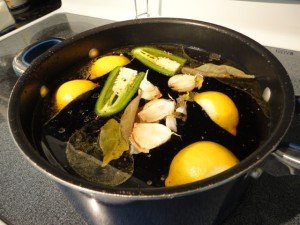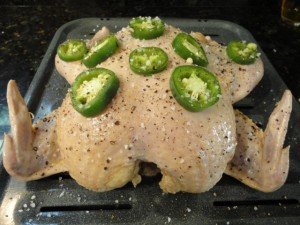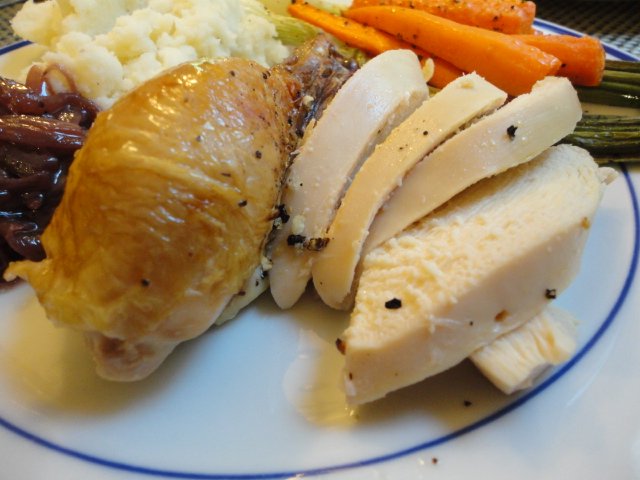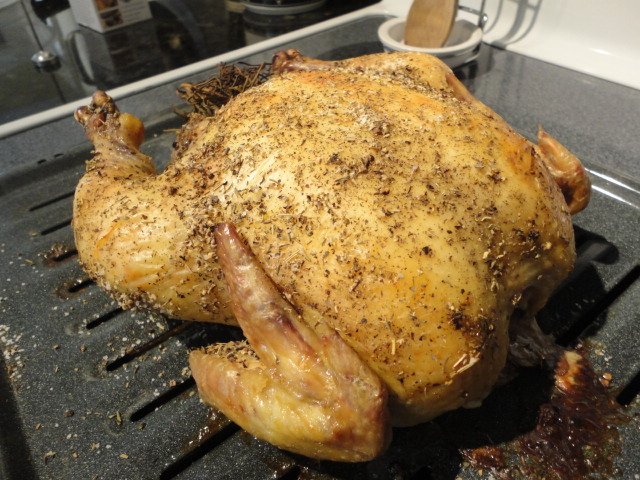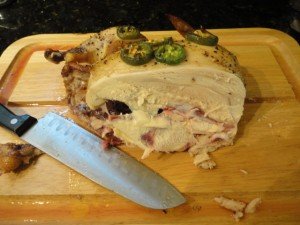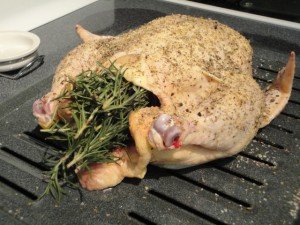To brine a chicken or a turkey is nothing new or revolutionary when it comes to adding additional tenderness and flavor to the bird. Hundreds recipes available on-line provide the basic ingredients (sugar, salt, water and seasoning) and the steps required. What I have learned is that to brine a chicken is very simple and beyond the basic ingredients of the brine, the limitation of an individual’s imagination is the only constraint to imparting flavors into the chicken.
I was looking to do something different for the whole chicken that I going to roast. I wanted to add some “kick” to the chicken. I thought to add jalapenos to the brine would be a worthy addition and experiment. When you are confident enough in the kitchen that even a potential failure is a learning experience, you are willing to risk a meal that does not live up to your expectation. Note: This meal was a success, but lessons were learned.
To brine a chicken requires a lot less effort and time then to brine a turkey, but there is still an element of planning required. At a minimum, the process starts the morning you are going to brine the chicken, but preparing the brine the day before provides you with much more flexibility.
Ingredients for the Jalapeno Brine:
- 1 Gallon of Water
- 3/4 Cup of Sea Salt (preferred, but Kosher or Table Salt will work)
- 2/3 Cup of Sugar
- 3/4 Cup of Soy Sauce
- 1/4 of Olive Oil
- 20 Cranks of Fresh Cracked Black Pepper
- 1 Jalapeno sliced in Half (you can use more jalapenos)
- 1 Lemon Quartered, Squeezed and Dropped into the Pot
- 4 Garlic Cloves Crushed (do not need to peel)
- 2-3 Bay Leaves
Instructions to Brine the Chicken:
- Add all of the ingredients together in a large pot, bring to a boil, stir and then allow the brine to cool to room temperature. To chill the brine quicker, use only half of the water when boiling and add the remaining water in the form of ice after the brine has been boiled.
- Place the whole chicken which has been defrosted, washed and the giblets removed into the pot (breast up). You may need to remove some of the liquid and / or place a plate on top of the chicken to keep it submerged.
- Place pot in refrigerator and brine the whole chicken for a minimum of four hours, but longer is better, but no more than twenty-four hours. Regularly rotate the whole chicken so the breast and drumsticks / thighs are facing up will ensure that the “heat” from the jalapenos is equally distributed to all parts of the bird.
- Thirty minutes before you are ready to roast the chicken, remove the chicken from the brine, wash, pat dry and place on a roasting pan. Then lightly coat the bird with Olive Oil and season with Black Pepper, Salt and Sliced Jalapenos.
Roasting a chicken is one of the simplest, easiest set of instructions to follow in the kitchen. Go to Roasting a Whole Chicken is Easy for simple to follow steps in preparing a perfectly roasted whole chicken.
The Jalapeno Brined whole chicken was succulent, flavorful and had just the hint of jalapeno. It was a worthy experiment that I will repeat again. As mentioned above, it is important to rotate the chicken in the brine. I did not do this and my chicken was breast down in the pot. Capsaicin the chemical compound in hot peppers that provides the heat (piquance / piquant) is soluble in vegetable oil, then alcohol and only slightly in water. Therefore, the capsaicin in the brine was concentrated in the olive oil that floated on the surface of the brine and not in the brine solution itself. The drumsticks and thighs were most impacted from the jalapeno peppers in the brine and in turn most flavorful. In addition to rotating the chicken, I will also insert slices of jalapeno peppers under the chicken skin to boost the contact flavor of the peppers to the meat.
This recipe can also be applied to individually cut chicken parts; Leg Quarters, Drumsticks, Thighs, Bone-In Breast Halves, Wings and Boneless Breasts and Thighs. The time required to brine these individual piece varies between two to four hours depending on size and thickness.


